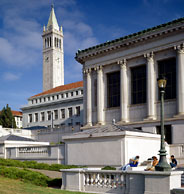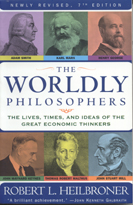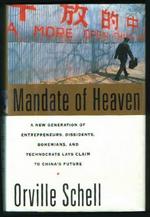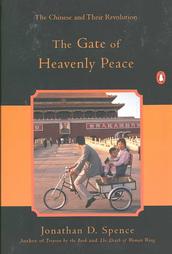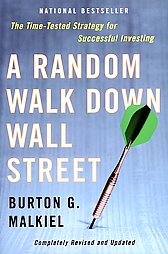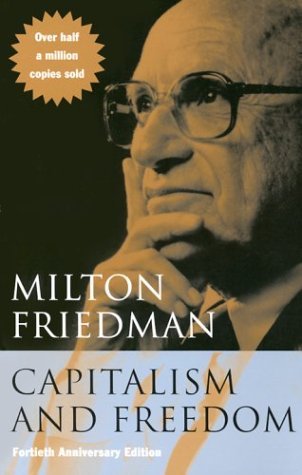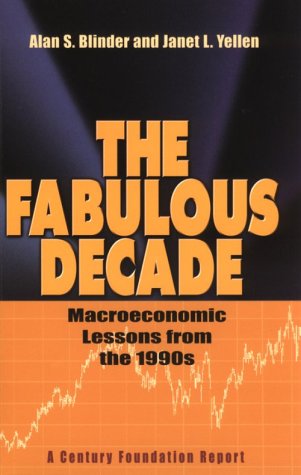Economist Milton Friedman Dies at 94
From AP
Milton Friedman, the Nobel Prize-winning economist who advocated an unfettered free market and had the ear of Presidents Nixon, Ford and Reagan, died Thursday. He was 94.
Friedman died in San Francisco, said Robert Fanger, a spokesman for the Milton and Rose D. Friedman Foundation in Indianapolis. He did not know the cause of death.
In more than a dozen books and in his column in Newsweek magazine, Friedman championed individual freedom in economics and politics.
His theory of monetarism, adopted in part by the Nixon, Ford and Reagan administrations, opposed the traditional Keynesian economics that had dominated U.S. policy since the New Deal. He was a member of Reagan’s Economic Policy Advisory Board.
His theories won him a Nobel Prize in economics in 1976.
Bank of China, Sinopec to Join Hang Seng Stock Index
From Bloomberg By Hanny Wan and Darren Boey
Bank of China Ltd. and China Petroleum & Chemical Corp., known as Sinopec, will be added to Hong Kong’s Hang Seng Index after a quarterly review of the stock benchmark, the compiler said.
The number of constituents on the Hang Seng will rise to 36
from 34, HSI Services Ltd. said in a statement after the market
closed today. No deletions were announced. The changes will take
effect on Dec. 4, the index provider said.
Bank of China and Sinopec, so-called H shares of companies
incorporated in mainland China, had been tipped for inclusion by
brokerages such as Nomura International (Hong Kong) Ltd.
The addition reflects the Chinese companies’ growing
presence on Hong Kong’s stock market. The exchange’s Web site
shows H shares at the end of October accounted for 21 percent of
the value of the main board, up from 1.5 percent at the end of
1997, the year the U.K. returned Hong Kong to China.
Bank of China and Sinopec’s inclusion “is evidence that H-
shares are getting more important,” said Kent Yau, deputy head
of research at Core-Pacific Yamaichi International in Hong Kong.
“If you look at the trading volume of H shares, they’re getting
bigger and bigger.”
The number of Hang Seng members will be gradually increased
to 38 to include H shares, HSI Services said in June. China
Construction Bank Corp., the nation’s fourth-largest lender, was
the first H share to join the stock benchmark after the index
compiler’s August quarterly review.
Shares of Bank of China, the nation’s second-largest lender,
have climbed 16 percent since they were sold in an initial public
offering at the end of May. Sinopec, Asia’s largest oil refiner,
has surged 47 percent this year.
“Bank of China was a bit of a surprise,” Yau said. “Short
term it’s going to get a boost. It’s positive news. Investors will
probably start to accumulate” before the changes take effect.
HSI Services determines constituents based on criteria such
as market value and trading volume. Adjustments would prompt
funds that mirror the stock benchmark, such as the $3.4 billion
Tracker Fund of Hong Kong, to buy stocks that are added.
Exchange-traded funds may have to buy HK$475.3 million
($61 million) of Sinopec shares and HK$579.4 million of Bank of
China shares in response to the inclusion in the Hang Seng, Sandy
Lee, an analyst at Nomura, said in an e-mail after HSI Services’
statement was released.
Bank of China has a market value of HK$851 billion, behind
HSBC Holdings Plc and China Mobile Ltd. among existing Hang Seng
Index members.
Sinopec, Asia’s biggest refiner, is valued at HK$562 billion,
which would put it behind Construction Bank, currently the
measure’s third-biggest company.
HSI Services also said it will start an index to measure the
H shares of Chinese financial-related companies from Nov. 27. The
Hang Seng China H-Financials Index will track five lenders
including Bank of China and Construction Bank, and three insurers
such as China Life Insurance Co.
New Design and Ad Rate Set for Time Magazine
For years Time magazine had a seemingly insurmountable lead in circulation over other weekly news magazines, but now that lead is narrowing.
Time said yesterday that starting in January it would cut its rate base — the number of readers it guarantees to advertisers — by 18.8 percent, to 3.25 million, from 4 million. The advertising rates charged by a magazine generally rise and fall based on that number.
But Time also said it wanted to persuade advertisers to switch to a new way of paying for ads, based on the total number of magazine readers, including those who read someone else’s copy. On that basis, Time says it has 19.5 million readers.
Time also said yesterday that it would increase its newsstand price by $1, to $4.95, starting in January. About 116,000 copies of the magazine are sold on average at newsstands.
Editors at Time are working on a redesign to be introduced in January, along with a change in the day the magazine hits newsstands, to Friday from Monday. Also, 800,000 of what Time determines to be its wealthiest readers will receive added style, travel and leisure content once a month. Time will pitch that magazine version to high-end advertisers.
The magazine’s announcement comes after months of tumultuous changes at Time, part of the Time Inc. division of Time Warner. Time Inc. has reduced the staff at all of its publications by 550 in the last year.
This year Time hired a new managing editor, Richard Stengel, with a mission to reinvent the magazine. It also hired Josh Tyrangiel to revive its Web site. Time and other weekly magazines have struggled to stay relevant against the Internet, cable channels and daily news.
Time’s publisher, Edward R. McCarrick, said the changes represented a monumental shift in magazine accountability. Some in the media industry have said that ads should be sold based on estimates of the total number of people who read a magazine, a system that would be similar to TV ratings.
Currently, magazine ads are sold based on the number of people who subscribe or buy the magazine on the newsstand. Mr. McCarrick said if advertisers agreed to switch to the new system, Time advertisers would be able to purchase space in the magazine based on a guaranteed number of 19.5 million readers starting next year, and the way the rate would be calculated would give advertisers more for their money.
“I don’t think the number of readers has gone down. That’s a number we are comfortable guaranteeing,” he said. “We’re doing something really bold and direct, which is throwing down the gauntlet.”
Previously, Mr. McCarrick said, Time’s rate base counts included people who received magazines through a variety of channels that other publications still use, including magazines sponsored by advertisers and sent out unrequested.
Earlier this year, the Audit Bureau of Circulations, which reports magazine circulation, began requiring magazines to break out the number of magazines in their circulation that go to places like doctors’ offices. Time magazine’s figure for such magazines was 350,623 out of about 4.1 million magazines sold in the first half of this year.
Newsweek magazine, in contrast, did not have such copies to report. Richard M. Smith, editor in chief of Newsweek, which is owned by the Washington Post Company, said he knew that Time had been looking at its rate base numbers for a while, just as his own magazine had.
“We continue to look carefully at the rate base, and I think for everyone in the magazine business the postal rate increases have been dramatic over the last few years, and we’re facing another increase of 12 percent in 2007. So that forces you to look at the economics of your circulation,” he said. “The other thing is, for both Time and Newsweek, the Web has provided both a very large audience and substantial advertising revenues.”
Time’s total circulation was up about 1.2 percent in the first half of this year compared with 2005. In contrast, the circulation of Newsweek fell 1.8 percent in the first half of this year, to about 3.1 million.
Some in the industry said Time’s reduction in its estimated readership was not surprising. Other magazines, including Reader’s Digest and Playboy, have also cut their base rates as circulations declined.
“Magazines are evolving to a kick-back medium from a news medium,” said Joe Mandese, editor of MediaPost in New York, an online and print trade publication. “Time is saying with the change that it’s not a start-your-week publication, it’s a kick-back, over-the-weekend publication, and Time.com is for news.”
New Design and Ad Rate Set for Time Magazine
For years Time magazine had a seemingly insurmountable lead in circulation over other weekly news magazines, but now that lead is narrowing.
Time said yesterday that starting in January it would cut its rate base — the number of readers it guarantees to advertisers — by 18.8 percent, to 3.25 million, from 4 million. The advertising rates charged by a magazine generally rise and fall based on that number.
But Time also said it wanted to persuade advertisers to switch to a new way of paying for ads, based on the total number of magazine readers, including those who read someone else’s copy. On that basis, Time says it has 19.5 million readers.
Time also said yesterday that it would increase its newsstand price by $1, to $4.95, starting in January. About 116,000 copies of the magazine are sold on average at newsstands.
Editors at Time are working on a redesign to be introduced in January, along with a change in the day the magazine hits newsstands, to Friday from Monday. Also, 800,000 of what Time determines to be its wealthiest readers will receive added style, travel and leisure content once a month. Time will pitch that magazine version to high-end advertisers.
The magazine’s announcement comes after months of tumultuous changes at Time, part of the Time Inc. division of Time Warner. Time Inc. has reduced the staff at all of its publications by 550 in the last year.
This year Time hired a new managing editor, Richard Stengel, with a mission to reinvent the magazine. It also hired Josh Tyrangiel to revive its Web site. Time and other weekly magazines have struggled to stay relevant against the Internet, cable channels and daily news.
Time’s publisher, Edward R. McCarrick, said the changes represented a monumental shift in magazine accountability. Some in the media industry have said that ads should be sold based on estimates of the total number of people who read a magazine, a system that would be similar to TV ratings.
Currently, magazine ads are sold based on the number of people who subscribe or buy the magazine on the newsstand. Mr. McCarrick said if advertisers agreed to switch to the new system, Time advertisers would be able to purchase space in the magazine based on a guaranteed number of 19.5 million readers starting next year, and the way the rate would be calculated would give advertisers more for their money.
“I don’t think the number of readers has gone down. That’s a number we are comfortable guaranteeing,” he said. “We’re doing something really bold and direct, which is throwing down the gauntlet.”
Previously, Mr. McCarrick said, Time’s rate base counts included people who received magazines through a variety of channels that other publications still use, including magazines sponsored by advertisers and sent out unrequested.
Earlier this year, the Audit Bureau of Circulations, which reports magazine circulation, began requiring magazines to break out the number of magazines in their circulation that go to places like doctors’ offices. Time magazine’s figure for such magazines was 350,623 out of about 4.1 million magazines sold in the first half of this year.
Newsweek magazine, in contrast, did not have such copies to report. Richard M. Smith, editor in chief of Newsweek, which is owned by the Washington Post Company, said he knew that Time had been looking at its rate base numbers for a while, just as his own magazine had.
“We continue to look carefully at the rate base, and I think for everyone in the magazine business the postal rate increases have been dramatic over the last few years, and we’re facing another increase of 12 percent in 2007. So that forces you to look at the economics of your circulation,” he said. “The other thing is, for both Time and Newsweek, the Web has provided both a very large audience and substantial advertising revenues.”
Time’s total circulation was up about 1.2 percent in the first half of this year compared with 2005. In contrast, the circulation of Newsweek fell 1.8 percent in the first half of this year, to about 3.1 million.
Some in the industry said Time’s reduction in its estimated readership was not surprising. Other magazines, including Reader’s Digest and Playboy, have also cut their base rates as circulations declined.
“Magazines are evolving to a kick-back medium from a news medium,” said Joe Mandese, editor of MediaPost in New York, an online and print trade publication. “Time is saying with the change that it’s not a start-your-week publication, it’s a kick-back, over-the-weekend publication, and Time.com is for news.”
Russia Near Deal to Join the W.T.O.
Officials in Washington and Moscow reached an agreement in principle for Russia to join the World Trade Organization, crossing the final big hurdle in the stop-and-go cycle that has marked the process since Moscow began its application shortly after the collapse of the Soviet Union.
The deal is expected to be signed next Saturday, when both President Bush and President Vladimir V. Putin of Russia will be in Hanoi for an Asia-Pacific Economic Cooperation meeting, negotiators from both countries said. The White House also announced this week that President Bush planned to stop in Moscow on Nov. 15 on his way to Vietnam.
“We have agreement in principle and are finalizing the details,” the United States trade representative, Susan Schwab, said in a statement. “It is a clear indication of Russia’s efforts to participate fully in and benefit from the rules-based global trading system.”
Mr. Putin has repeatedly said that joining the 149-member W.T.O. was a major foreign policy goal, though Russia’s oil-driven economy will get few direct gains from membership in the organization, which sets the ground rules for globalization. But joining would give Russia a voice in world trade talks, with the potential to help set future trade policy.
“Russia today is the only major world economy outside the W.T.O. — the only one,” Mr. Putin said at a news conference early in his presidency, in June 2002. “Staying outside this organization, outside this process is dangerous and stupid.”
American officials say the countries gradually worked out nagging disputes on issues like agriculture inspections, chicken exports to Russia and intellectual property protection.
The Bush administration has other contentious issues with Russia, particularly its support for Iran and that country’s nuclear program. There was no immediate sign of any broader deal involving those issues.
One American official said that Russian negotiators had been a “moving target” back in July, balking on issues that Washington thought had been resolved. But they said Russian officials had become more forthcoming in recent weeks.
“At the bitter end, the issues were quite trivial,” said Gary C. Hufbauer, a trade policy expert at the Institute for International Economics in Washington, who has followed the negotiations.
Mr. Hufbauer suggested that Russian leaders might have decided to seal a deal out of worry that this week’s elections would mean greater resistance by Democrats to an accord. “I think the Russians read the election returns and realized that if they don’t go for it now, they might not get anything,” he said.
Russia still must win approval from Moldova and Georgia, countries with deep grievances over a Russian ban on importing wine, ostensibly for health reasons. Those countries could further delay any final deal on W.T.O. membership, which is expected to take place next year. Russian officials have said they want to join in 2007.
Georgia first approved Russia’s membership but rescinded it last month, after Russia blockaded its border. Maksim Medvedkov, Russia’s chief negotiator, said Friday in remarks carried on state television that he would not negotiate with Moldova and Georgia separately but try to allay their objections during multilateral talks with the W.T.O. in Geneva.
The European Union, China and Japan have already signed off on Russian membership.
American officials said they reached agreement on longstanding disputes about American exports of poultry, beef and pork. Russia is the United States’ biggest export market for chicken parts, but American producers have long complained about being hindered by Russian inspection procedures.
The agreement also calls for Russia to offer greater access for foreign services, from construction to overnight parcel delivery and telecommunications. Russian officials also agreed to allow banks and investment firms in Russia to be owned by foreign companies, meaning that foreign banks would not need to team up with Russian partners.
American trade negotiators accepted an unusual restriction on foreign players in the banking and insurance sectors, according to the trade representative office. It will limit foreign investment to no greater than 50 percent of total investments in these businesses. In Moscow, state television reported Friday that Russia was the only country in the W.T.O. to win this concession.
Russia also promised to step up enforcement of intellectual property rights, which had been carried out in spotty fashion.
Russian trade relations with the United States, while forming only a tiny share of both countries’ total foreign trade, have gone through some dismal periods. In 2002, President Bush imposed tariffs on steel, a major Russian export commodity, and Mr. Putin retaliated by banning imports of chicken thighs, known as “Bush Legs” because the product first arrived in Russia as food aid under the president’s father in the early 1990s.
In contrast to China, Russia’s oil-dependent economy gains little from joining the W.T.O. “China is a consumer goods manufacturer and exporter and there was a huge benefit for China,” said Peter Westin, chief economist at the MDM Bank. “There will be nothing like that for Russia.”
Instead, Mr. Westin and other economists say, the primary benefit for Russia would come in exposing the domestic banking, telecommunications and other sectors to more direct foreign competition. This should increase productivity.
Ford Motor, which produces about 70,000 cars a year in Russia and exports another 50,000 cars to Russia, said it was delighted by the deal. Over the next seven years, Russian duties on foreign-made cars are set to decline to 15 percent, from 25 percent today.
“What all this adds up to,” said Stephen E. Biegun, Ford’s vice president for international governmental affairs, “is that we will be able to grow as fast as we possibly can in Russia.”
Google Buys JotSpot to Expand Online Document-Sharing Service
Google Inc. said it acquired closely held start-up JotSpot for an undisclosed sum, a move that could strengthen Google’s expanding services for users to create and share documents online.
JotSpot, exploiting a technology called wikis, provides free and paid services that allow individuals to jointly work on Web-based information such as spreadsheets, photo albums, calendars and contact lists. Google, Mountain View, Calif., has assembled free online word-processing, spreadsheet, email and calendar services that have some similarities with JotSpot’s offerings. Such services could win away some of the consumers Microsoft Corp. is targeting with its Office software.
JotSpot Chief Executive Joe Kraus said his company was happy to join Google because “it’s really clear they are focusing on letting people collaborate and share and work together online.” Google executives are also trying to streamline the number of products the company has, and Mr. Kraus said JotSpot would focus on how to integrate with Google’s existing services.
JotSpot, Palo Alto, Calif., has about 30,000 paying corporate customers at about 2,000 companies. Roughly 300,000 people use JotSpot’s free service, which carries some storage and other restrictions. The company, which received funding from the Mayfield Fund and Redpoint Ventures venture-capital firms, has 27 employees.
US Newspaper Circulations Slide More
Nearly every major U.S. newspaper suffered circulation declines in the past six months, according to the newspaper industry’s twice-yearly report from the Audit Bureau of Circulations, the latest confirmation of the difficulties facing the industry as readers flock to the Web and other outlets for news.
Average daily circulation of the 770 newspapers reporting results to the ABC dropped 2.8% on a year-to-year basis during the six months ended Sept. 30, according to an analysis from the Newspaper Association of America, an industry-trade group. The drop in circulation follows a decline of 2.5% during the reporting period ended March 31 of this year and a 2.6% decline in the year-earlier period. Average Sunday circulation at 619 of the country’s newspapers fell 3.4% in the most recent six months, according to the NAA. The circulation figures are preliminary and subject to audit by the ABC.
The circulation report, which comes on the heels of several major publishers reporting weaker ad revenue for the third quarter, is likely to reinforce concerns among investors about the industry’s prospects. Those concerns have prompted some investors to push companies such as Tribune Co. to restructure or put themselves on the market.
Top 20 US Newspaper by circulation:
Newspaper Circulation Change from Mar-Sept. 2006
1. USA Today 2,269,509 -1.30%
2. The Wall Street Journal 2,043,235 -1.90%
3. The New York Times 1,086,798 -3.50%
4. Los Angeles Times 775,766 -8%
5. New York Post 704,011 5.10%
6. New York Daily News 693,382 1%
7. The Washington Post 656,297 -3.30%
8. Chicago Tribune 576,132 -1.70%
9. Houston Chronicle 508,097 -3.70%
10. Newsday, Long Island 410,579 -5%
11. The Arizona Republic 397,294 -2.60%
12. The Boston Globe 386,415 -6.70%
13. The Star-Ledger of Newark, N.J., 378,100 -5.50%
14. San Francisco Chronicle 373,805 -5.40%
15. Star Tribune of Minneapolis-St. Paul 358,887 -4.20%
16. The Atlanta Journal-Constitution 350,157 -3.50%
17. The Plain Dealer, Cleveland 336,939 -0.60%
18. The Philadelphia Inquirer 330,622 -7.60%
19. Detroit Free Press 328,628 -3.60%
20. The Oregonian 310,803 -6.80%
Chinese Court Orders FTSE Xinhua Index Provider To Cancel Contract
A Chinese court said FTSE Xinhua Index Ltd. violated a contract with the Shanghai Stock Exchange related to pricing data, but the index provider said the ruling would have no impact on its ability to do business.
The Shanghai Pudong New Area District Court yesterday ordered cancellation of the year-old contract and ordered FTSE Xinhua Index to pay the exchange damages of $20,000, according to Fredy Bush, co-chairman of FTSE Xinhua. Ms. Bush said that her company will appeal the decision, and that in the meantime it has an alternative way to obtain Shanghai stock prices needed to calculate the values of the SGX FTSE Xinhua China A50 Index Futures contract, a product it licenses to trade in Singapore.
Will TCL Ultimately Withdraw From Europe?
From The Wall Street Journal
TCL Will Produce Fewer Sets in France As Expansion Falters
TCL Multimedia Technology Holdings Ltd. announced plans to overhaul its European television-manufacturing operations — the latest sign of problems with the company’s expansion strategy.
The changes will result in TCL producing fewer TV sets in France and, temporarily, other European countries. Those it produces won’t be sold under its own brand but will be supplied to other companies.
Its deal in 2003 to acquire the European TV business of Thomson SA marked one of the more significant moves by a Chinese company to expand overseas in recent years and left TCL in control of the Thomson brand in Europe and the RCA brand in the U.S.
TCL opened its first factory dedicated to flat-panel TV sets only last year, well behind Sony Corp., Samsung Electronics Co. and LG Electronics Co. Earlier this year, TCL moved to secure LCDs by forging a supply deal with LG.Philips LCD Co. LCDs are used in the most popular type of flat-panel TV sets.
U.C. Berkeley Journalism Dean Search
U.C. Berkeley Journalism Dean Search
DRAFT:
Dean: Graduate School of Journalism: University of California, Berkeley
The University of California, Berkeley, invites nominations and applications for the position of Dean of the Graduate School of Journalism. The appointment is effective July 1, 2007.
The School offers a master’s degree program that prepares students for the highest levels of journalism. The School’s purpose is to educate professionals to work in areas ranging from newspapers, magazines, and television to documentary film, radio, photography, and new media.
The dean provides academic, intellectual, professional, and executive leadership; maintains a collegial environment conducive to excellence in teaching, research and journalistic integrity; and takes a leadership role in raising funds and promoting relationships with alumni and the profession.
Applicants for this position should demonstrate an accomplished journalistic record consistent with a position in a news organization of recognized excellence. Top candidates will have a record of demonstrated leadership and administrative skills. Teaching experience is desirable but not required. The Dean may hold a professorship in the Graduate School of Journalism.
Nominations or applications will be given prompt consideration if received by December 31, 2006, but earlier submissions are strongly encouraged.
Applications should contain a letter of interest, detailed resume, and the names of at least three professional references. Nominations should include complete contact information, through either print or electronic means. Nominations or applications should be sent to:
Chair, Journalism Search Committee
University of California, Berkeley
109 California Hall
Berkeley, CA 94720-1500
Electronic submissions are encouraged and should be sent to: journalismdeansearch@berkeley.edu
This is a sensitive position and subject to a criminal background check.
As a member of this search committee, I find myself at sea. Here is one question, addressed to all journalists:
What skills would you think you needed to learn immediately if you were starting in journalism right now?
Here’s a second question, addressed to everybody:
What does a good Graduate School of Journalism look like early in the 21st century?
Here’s a third, Berkeley-specific question:
Berkeley has no fewer than four bureaucratic organizations that seem to be headed for the same place or at least overlapping places:
UC Berkeley School of Information.
UC Berkeley School of Journalism.
UC Berkeley Center for New Media.
UC Berkeley Mass Communications Major.
Should all four of these be merged? Should we search for a Journalism School dean who could–if things develop in such a way–be dean of such a merged enterprise?

